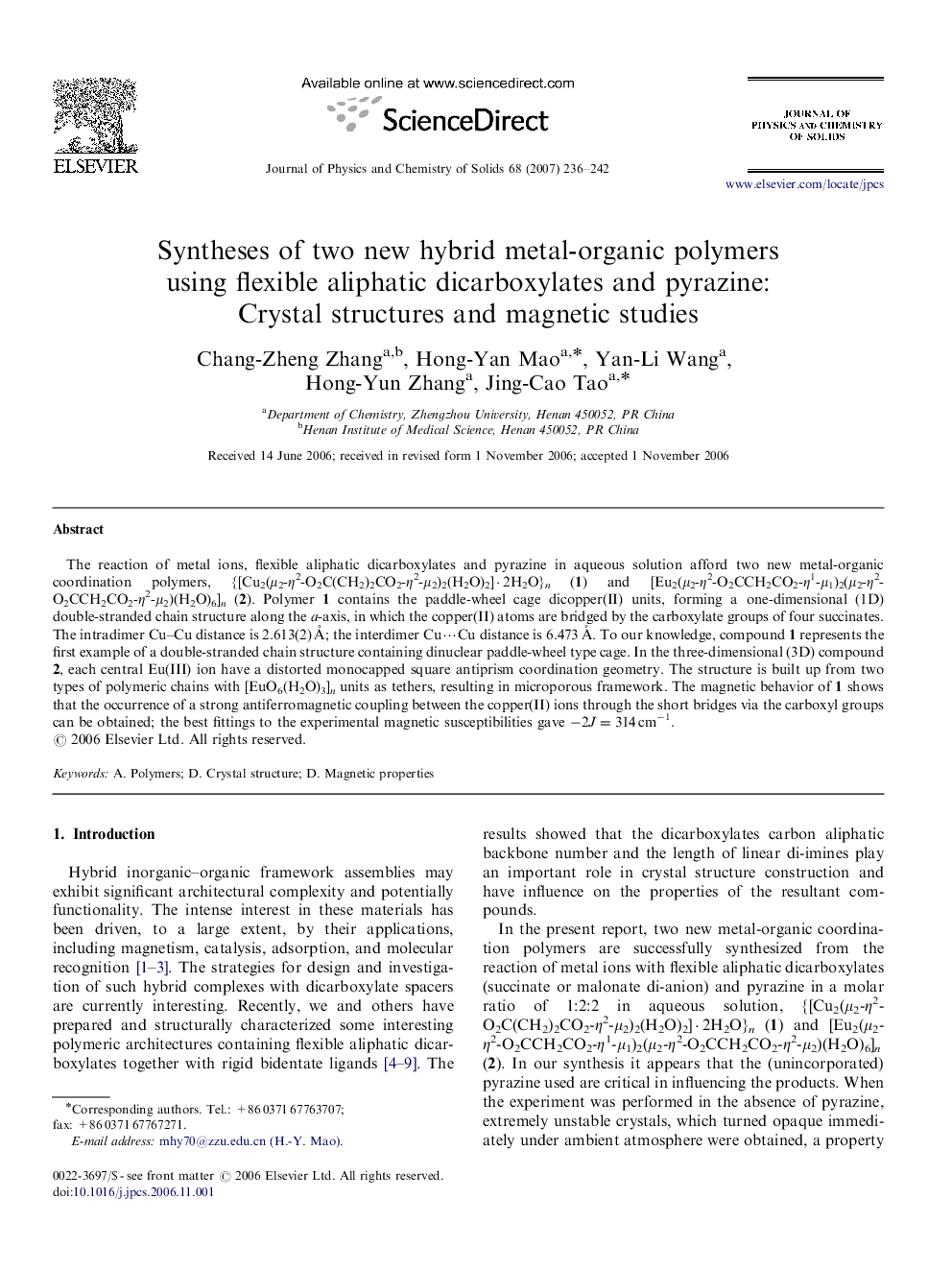| Article ID | Journal | Published Year | Pages | File Type |
|---|---|---|---|---|
| 1519100 | Journal of Physics and Chemistry of Solids | 2007 | 7 Pages |
The reaction of metal ions, flexible aliphatic dicarboxylates and pyrazine in aqueous solution afford two new metal-organic coordination polymers, {[Cu2(μ2-η2-O2C(CH2)2CO2-η2-μ2)2(H2O)2]·2H2O}n (1) and [Eu2(μ2-η2-O2CCH2CO2-η1-μ1)2(μ2-η2-O2CCH2CO2-η2-μ2)(H2O)6]n (2). Polymer 1 contains the paddle-wheel cage dicopper(II) units, forming a one-dimensional (1D) double-stranded chain structure along the a-axis, in which the copper(II) atoms are bridged by the carboxylate groups of four succinates. The intradimer Cu–Cu distance is 2.613(2) Å; the interdimer Cu⋯Cu distance is 6.473 Å. To our knowledge, compound 1 represents the first example of a double-stranded chain structure containing dinuclear paddle-wheel type cage. In the three-dimensional (3D) compound 2, each central Eu(III) ion have a distorted monocapped square antiprism coordination geometry. The structure is built up from two types of polymeric chains with [EuO6(H2O)3]n units as tethers, resulting in microporous framework. The magnetic behavior of 1 shows that the occurrence of a strong antiferromagnetic coupling between the copper(II) ions through the short bridges via the carboxyl groups can be obtained; the best fittings to the experimental magnetic susceptibilities gave −2J=314 cm−1.
